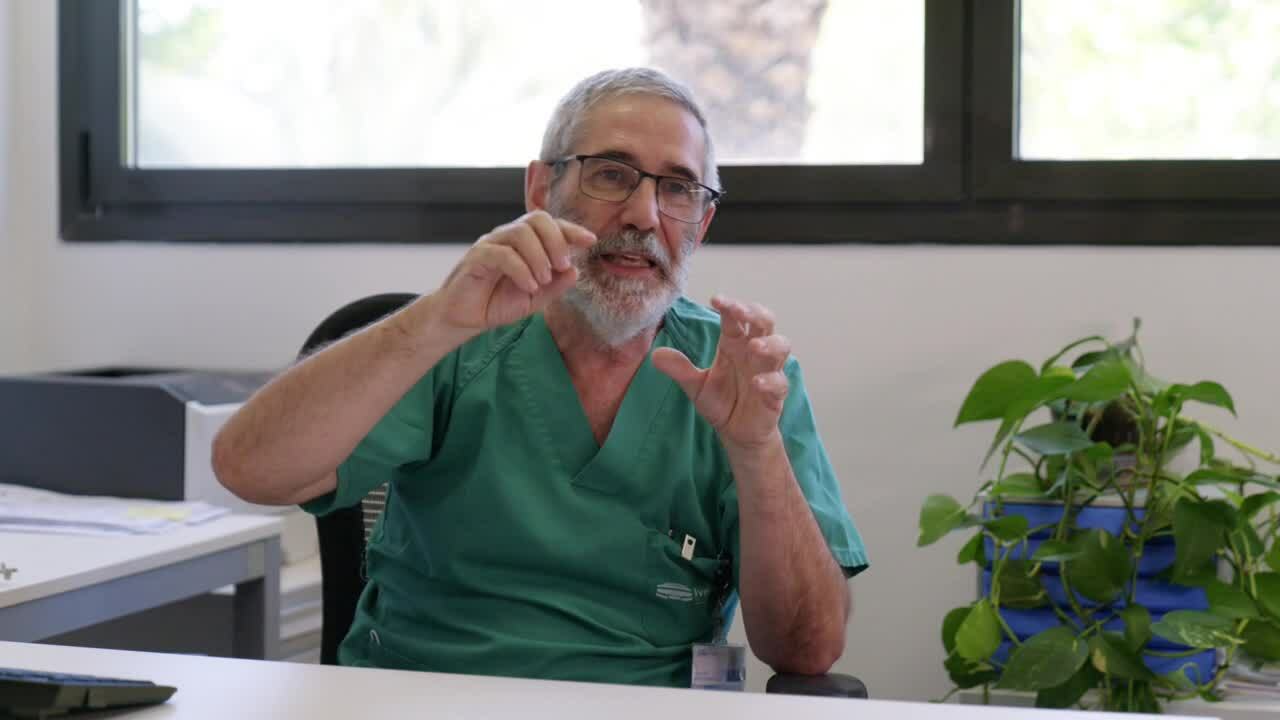
How cervical cancer treatment has been improved by brachytherapy
Healthcare Perspective
Dr Guinot - Cervical Cancer
Dr. Guinot, Physician at Fundación Instituto Valenciano de Oncología in Valencia talks about how cervical cancer treatment has improved thanks to the advancements in brachytherapy and the application of modulated brachytherapy to achieve higher accuracy through controlled higher doses of targeted radiotherapy.

The challenges of cervical cancer treatments
Tumor removal surgery is the standard treatment option for gynecologic cancers. However, while uterus cancer can be diagnosed at an early stage, and thus be operated on, cervical cancer is harder to detect, often leading to a diagnosis at an advanced stage when the tumor has spread extensively laterally and sometimes to other parts of the body.
In these instances, surgery is rarely an option. Even at an early detection stage, cervical cancer remains hard to operate on because it is often difficult to localize the tumor and its boundaries visually. When cancer cells are located deep within the tissue layers, it makes it difficult to remove the entire tumor and surrounding tissue. Additionally, since cervical cancer is often caused by the human papillomavirus (HPV), it is challenging to completely remove the virus with surgery.
When surgery is not an option for cancer treatment, radiation therapy (including brachytherapy) becomes an effective alternative to destroy cancer cells and shrink the tumor.
What is brachytherapy?
Brachytherapy is an effective and widely used treatment for gynecologic cancers, including cervical cancer, endometrial cancer, and ovarian cancer. As a form of internal radiation therapy, brachytherapy involves placing radiation sources directly inside the body for a more targeted approach to treatment.
The use of brachytherapy in treating cervical cancer has been documented since the late 1800s, and it remains a commonly performed procedure today. By placing small, precise brachytherapy seeds inside the body, oncologists are able to deliver a higher dose of radiation directly to the tumor while minimizing damage to surrounding tissues. This precision makes brachytherapy a highly effective form of treatment for cervical cancer.
In addition to its effectiveness, brachytherapy also offers patients a number of benefits over traditional radiation treatments. For example, it often results in fewer side effects and a shorter treatment time, as well as a quicker recovery period.

Brachytherapy vs another treatment plan
Brachytherapy has advanced cervical cancer treatment by providing a more targeted, precise, and effective way to deliver radiation to the tumor site. It is a minimally invasive procedure that involves placing radioactive materials in the tumor or near the tumor site.
This allows for a more concentrated dose of radiation to the affected area to kill cancer cells and a reduced risk of damaging healthy tissue in the surroundings. Brachytherapy can be used in combination with other treatments such as external beam radiation therapy, providing even more effective outcomes for cervical cancer.
In this video, Dr. Guinot also explains that studies have shown that up to three brachytherapy applicators can be placed inside the uterus and in the vagina. With this precisely targeted therapy called intracavity brachytherapy, the radiation oncologist is able to administer a radiation dose that is at least twice what we are able to give with external radiation therapy alone.
What are the advantages of Brachytherapy?
Brachytherapy offers a number of benefits over conventional radiation treatments, including the ability to deliver a higher dose of radiation with fewer side effects. This is achieved by using precise brachytherapy seeds that target the tumor while minimizing damage to surrounding tissues.
In cases of cervical cancer, the risk of damage to nearby tissues is further reduced as the brachytherapy seeds are so precise that healthy tissue is not affected. This technique also allows healthcare professionals to adjust radiation doses to the bladder and rectum, which are located in front and behind the tumor respectively.
Additional applicators, such as needles, can also be positioned to deliver more doses to the sides. This is known as conformal radiation therapy, which is designed to deliver a higher dose of radiation to cancer cells while minimizing damage to surrounding tissues.
Another technique used in external radiation therapy is intensity-modulated radiotherapy (IMRT), which allows for precise adjustment of radiation to organs. This technique is currently the most accurate form of radiotherapy available. When combined with brachytherapy, the dose can be adjusted with even greater accuracy.
Over the last decade or so, the use of external radiation therapy without brachytherapy was common in hospitals that lacked the equipment for this advanced technique. However, the survival rate was found to be significantly lower than when brachytherapy was used. This highlights the importance of using the most effective treatment methods available.
Today, new techniques such as SRBT and high-precision radiation therapy are being developed to further improve the effectiveness of external radiation therapy and offer different treatment options.
Brachytherapy has also improved for treatment of cervical cancer.
Dr. Guinot explains that brachytherapists and oncologists no longer treat the uterus and vagina separately. As techniques and instrumentation have evolved, they now treat cancer via internal radiation therapy with state-of-the-art gynecological applicators such as the Utretch, or the Venezia applicator. These applicators have brought extraordinary advancement to treat advanced cervical cancer even for tumors as large as 6, 7, or 8 cm.
The future of cervical cancer brachytherapy is looking bright. With the advancement of technology, brachytherapy is becoming increasingly precise and accurate, allowing doctors to target high-risk areas of the cervix while avoiding healthy tissue.
This minimizes the risk of damage to nearby organs and structures, reducing the risk of serious side effects and improving the effectiveness of the treatment. Additionally, new treatments for cervical cancer, including image-guided brachytherapy, are becoming more widely available, allowing specialists to customize treatments and deliver them with greater accuracy.
Dr. Guinot strongly believes that all hospitals should be equipped with a brachytherapy unit, as the internal radiation treatment provided by this unit can greatly benefit a larger number of patients with advanced cervical cancer conditions.
